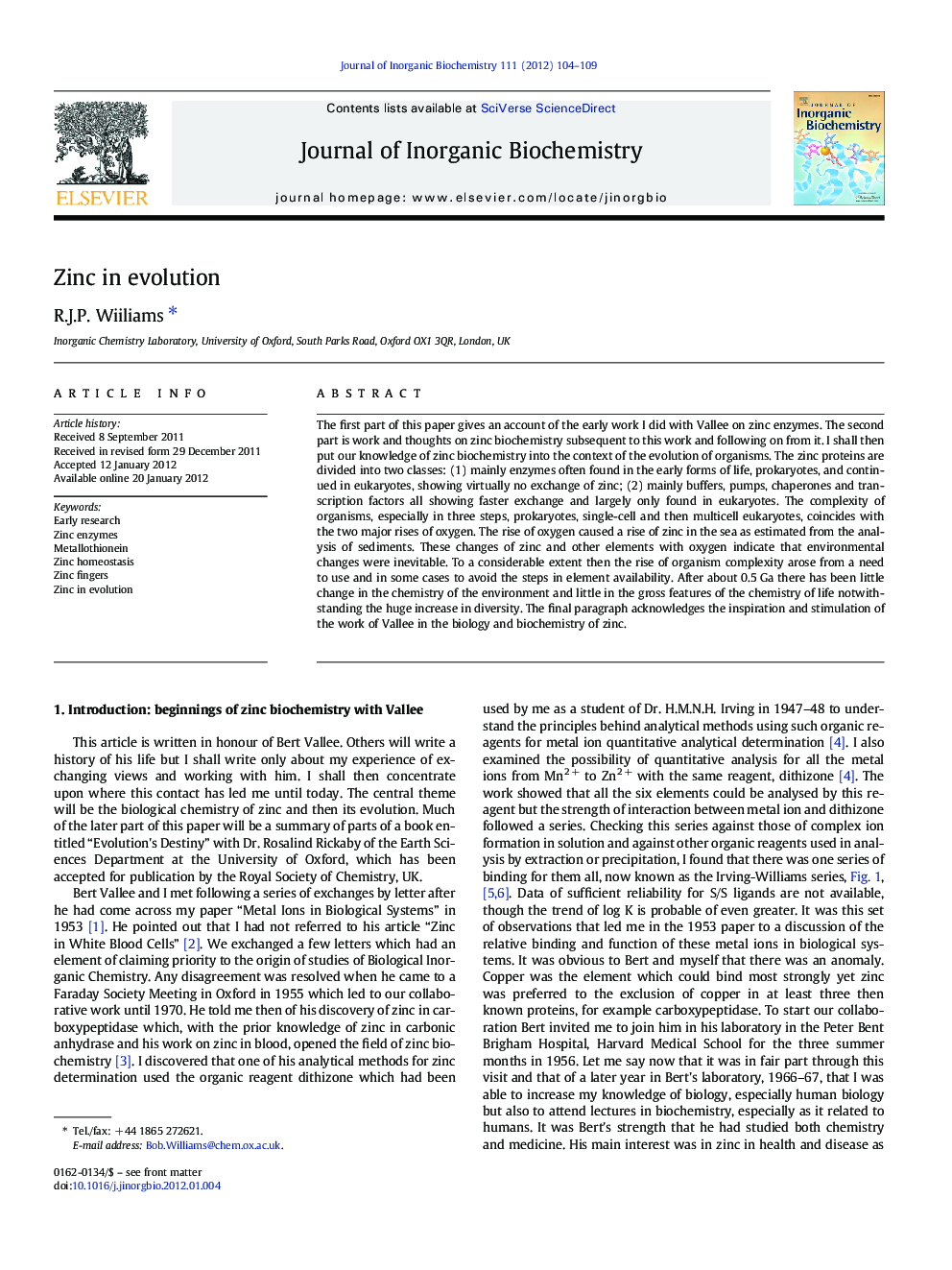| Article ID | Journal | Published Year | Pages | File Type |
|---|---|---|---|---|
| 1317757 | Journal of Inorganic Biochemistry | 2012 | 6 Pages |
The first part of this paper gives an account of the early work I did with Vallee on zinc enzymes. The second part is work and thoughts on zinc biochemistry subsequent to this work and following on from it. I shall then put our knowledge of zinc biochemistry into the context of the evolution of organisms. The zinc proteins are divided into two classes: (1) mainly enzymes often found in the early forms of life, prokaryotes, and continued in eukaryotes, showing virtually no exchange of zinc; (2) mainly buffers, pumps, chaperones and transcription factors all showing faster exchange and largely only found in eukaryotes. The complexity of organisms, especially in three steps, prokaryotes, single-cell and then multicell eukaryotes, coincides with the two major rises of oxygen. The rise of oxygen caused a rise of zinc in the sea as estimated from the analysis of sediments. These changes of zinc and other elements with oxygen indicate that environmental changes were inevitable. To a considerable extent then the rise of organism complexity arose from a need to use and in some cases to avoid the steps in element availability. After about 0.5 Ga there has been little change in the chemistry of the environment and little in the gross features of the chemistry of life notwithstanding the huge increase in diversity. The final paragraph acknowledges the inspiration and stimulation of the work of Vallee in the biology and biochemistry of zinc.
Graphical abstractThe article is divided into an appreciation of Vallee's work on Zinc in which I was a collaborator for the first fifteen years and I description of subsequent advances in the evolution of zinc functions in cells. I have included my own recent work and thoughts.Figure optionsDownload full-size imageDownload as PowerPoint slideHighlights►Vallee's initial research on zinc in cells and in proteins. ►Observations on zinc enzymes, the entatic state. ►Stability and dissociation of zinc proteins, homeostasis and signalling. ►The enantiomorphic replacement of zinc, zinc indicators. ►The evolution of zinc proteins and their functions examined by duplication of proteins.
